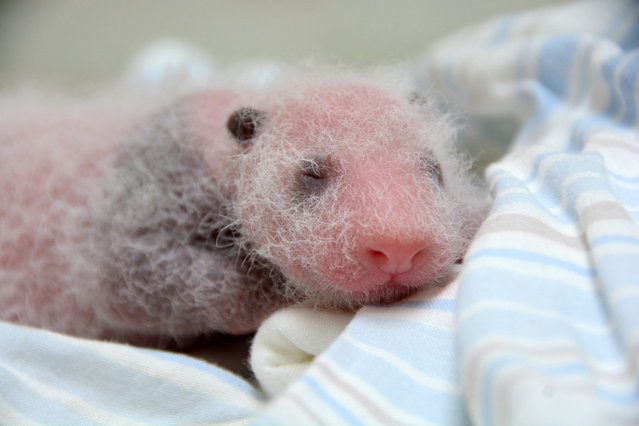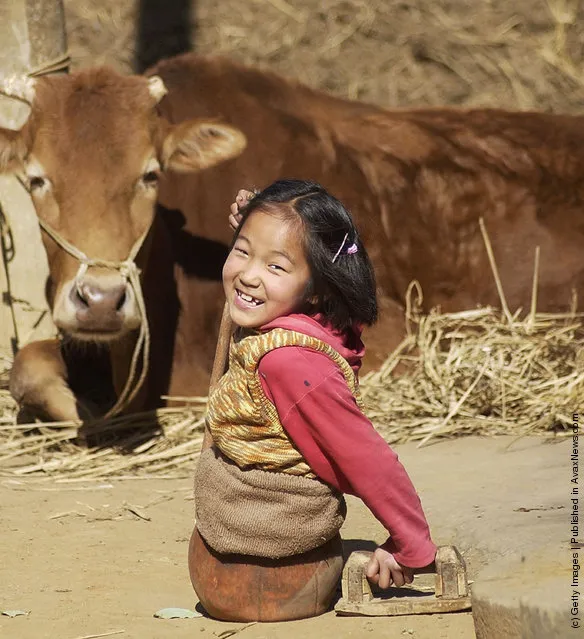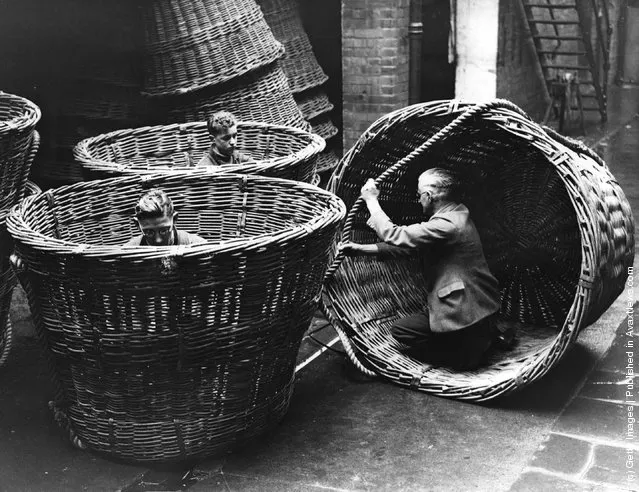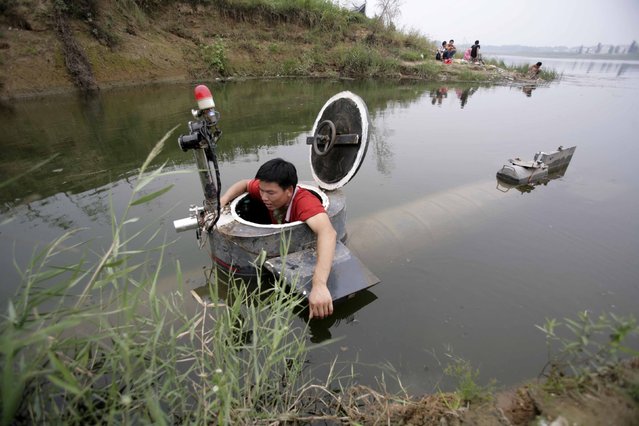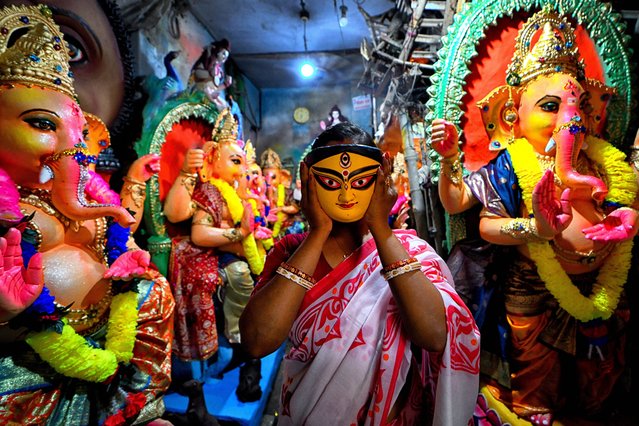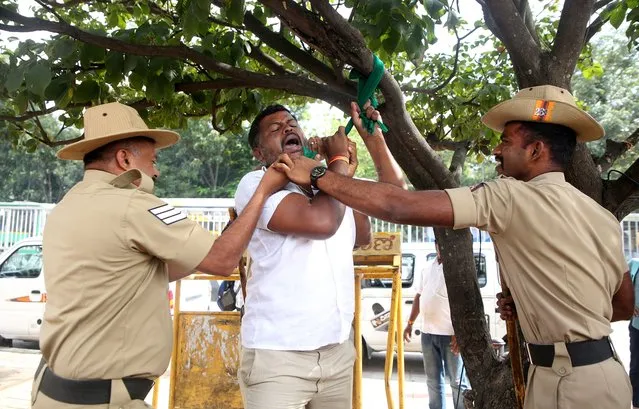
Police officers intervene as a man attempts to hang himself during a protest to oppose the sharing of river water with a neighboring state, in Bengaluru, India on September 26, 2023. (Photo by Reuters/Stringer)
03 Oct 2023 03:10:00,post received
0 comments



